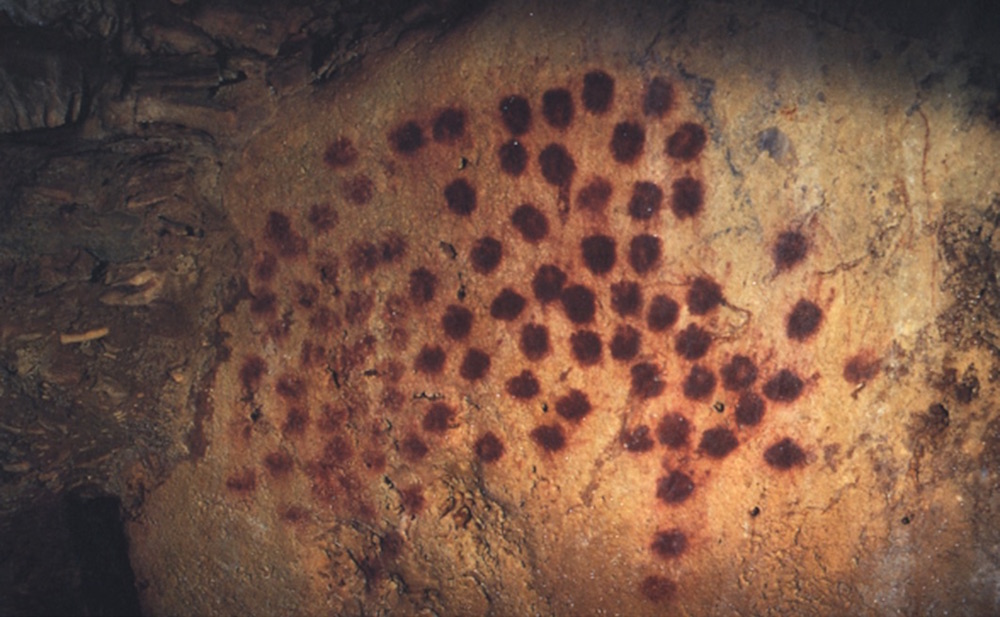Just Like Van Gogh: Prehistoric Artists Used Pointillist Technique
Archaeologists found 16 limestone tablets dating to the Aurignacian period, named for the first known people to settle in Europe. The tablets were engraved with pictures of horses, mammoths and aurochs (extinct wild cows). Most notably, the pictures were drawn using a series of dots and lines — or as archaeologists call the technique, pointillism.
Modern pointillism was invented in the 1880s by Georges Seurat and Paul Signac, who developed the technique by using small dots to create the illusion of a larger image. Other artists, including Camille Pissarro and Roy Lichtenstein, followed suit. [Photos: Ancient Cave Painting Mystery Solved by DNA]
"We're quite familiar with the techniques of these modern artists," study lead researcher Randall White, an anthropologist at New York University, said in a statement. "But now we can confirm this form of image-making was already being practiced by Europe's earliest human culture, the Aurignacian."

This isn't the first time archaeologists have visited the site, known as Abri Blanchard, which is located in France's Vézère Valley. When the site was first excavated in 1927, archaeologists found 15 limestone blocks that were either engraved, pierced or both, the researchers said. (In this context, "engraved" means that a sharp point was dragged "across a surface, creating a continuous line," the researchers wrote in the study.)
In 2014, White and his colleagues journeyed to the valley to reexamine the site. The new discovery took them completely by surprise, they said. By looking at black-and-white photos taken during the 1927 excavation, it appears that the newfound tablets had already been unearthed, but no one had studied them at the time, the researchers said. During the recent excavation, the researchers rediscovered the tablets at the site, including an additional one that they excavated during the project, they said.
One of the blocks had been prehistorically broken in half, but the other 15 were preserved well enough for the researchers to study them, they said. Many of the engraved marks are rudimentary and challenging to interpret, but the team was able to determine which animals were modeled on each, the researchers added.
The newfound blocks are currently housed at the French National Museum of Prehistory in Dordogne, in southwestern France.
Get the world’s most fascinating discoveries delivered straight to your inbox.
The new findings are similar to earlier, isolated discoveries in France. For instance, researchers found another pointillist creation depicting a rhinoceros at the Grotte Chauvet in France. However, unlike the newly discovered blocks, the ancient people at that site created the rhinoceros image by painting the palm of their hand and then transferring it to a cave wall, the researchers said.

Earlier this year, White's team reported the discovery of a 38,000-year-old pointillist image of an aurochs. This aurochs is the earliest graphic imagery known to exist in Western Eurasia, and sheds light on the complex nature of the early humans who made the imagery, the researchers said.
The new study was published online today (Feb. 24) in the journal Quaternary International.
Original article on Live Science.

Laura is the archaeology and Life's Little Mysteries editor at Live Science. She also reports on general science, including paleontology. Her work has appeared in The New York Times, Scholastic, Popular Science and Spectrum, a site on autism research. She has won multiple awards from the Society of Professional Journalists and the Washington Newspaper Publishers Association for her reporting at a weekly newspaper near Seattle. Laura holds a bachelor's degree in English literature and psychology from Washington University in St. Louis and a master's degree in science writing from NYU.
